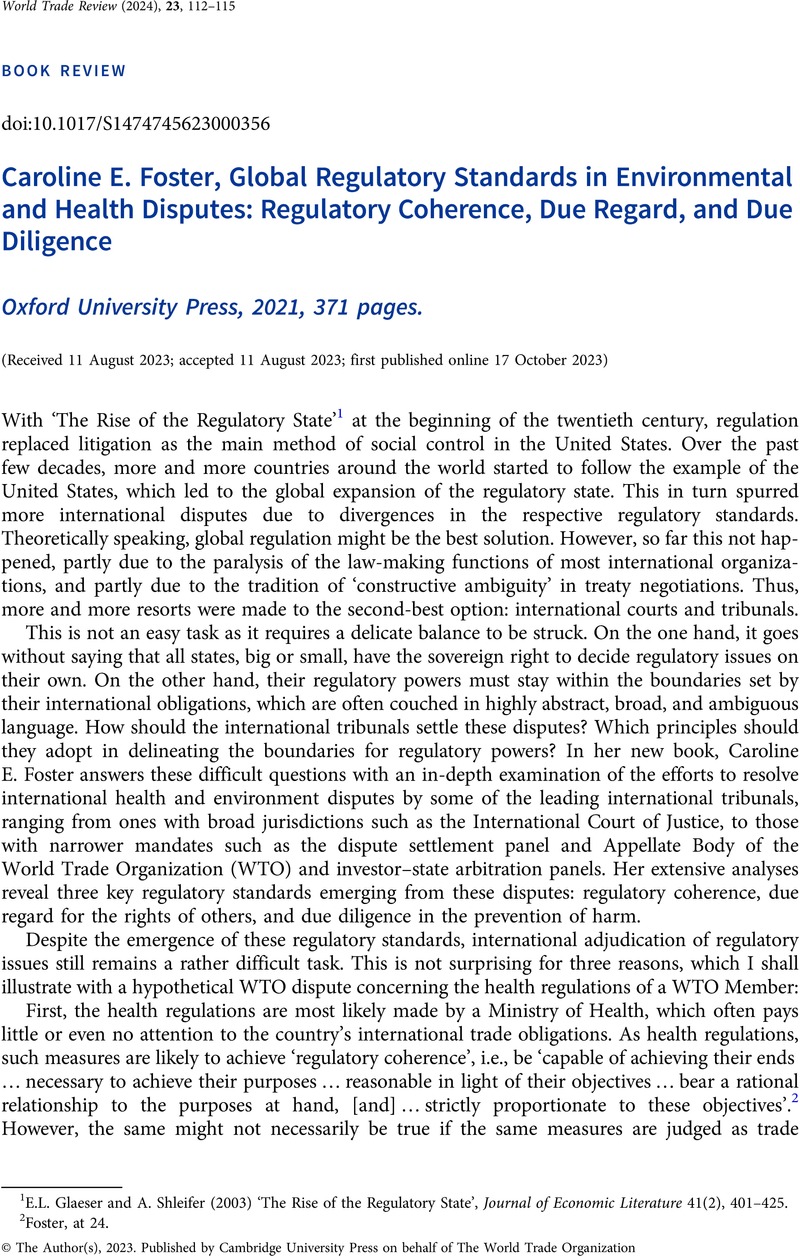No CrossRef data available.
Published online by Cambridge University Press: 17 October 2023

1 Glaeser, E.L. and Shleifer, A. (2003) ‘The Rise of the Regulatory State’, Journal of Economic Literature 41(2), 401–425Google Scholar.
2 Foster, at 24.
3 Ibid., at 87.
4 Ibid., 288–290.
5 Ibid., 290–293.
6 Glaeser and Shleifer, supra note 1.
7 United States Trade Representative, ‘Report on the Appellate Body of the World Trade Organization’, February 2020, https://ustr.gov/sites/default/files/Report_on_the_Appellate_Body_of_the_World_Trade_Organization.pdf (accessed 4 August 2021)
8 Ibid, at 90–95.
9 Foster, at 285.
10 B. Hoekman and C. Sabel (2019) ‘Open Plurilateral Agreements, International Regulatory Cooperation and the WTO’, Global Policy, https://doi.org/10.1111/1758-5899.12694.
11 ‘WTO, Joint Initiatives’, www.wto.org/english/tratop_e/jsi_e/jsi_e.htm (accessed 3 January 2023).
12 ‘WTO, Joint Initiative on Services Domestic Regulation’, www.wto.org/english/tratop_e/serv_e/jsdomreg_e.htm (accessed 3 January 2023).
13 ‘Circulation of Draft Agreement Marks Major Milestone in Investment Facilitation Talks’, www.wto.org/english/news_e/news22_e/infac_16dec22_e.htm (accessed 3 January 2023).
14 For background on the US blockage, see H. Gao (2018) ‘Dictum on Dicta: Obiter Dicta in WTO Disputes’, World Trade Review 17, 509, 509–533; Weihuan, Z. and Gao, H. (2019) ‘“Overreaching” or “Overreacting”? Reflections on the Judicial Function and Approaches of WTO Appellate Body’, Journal of World Trade 53, 951, 951–978Google Scholar; Gao, H. (2021) ‘Finding a Rule-Based Solution to the Appellate Body Crisis: Looking Beyond the Multiparty Interim Appeal Arbitration Arrangement’, Journal of International Economic Law 24(3), 534–550Google Scholar, https://doi.org/10.1093/jiel/jgab031.
15 See ‘Statement from USTR Spokesperson Adam Hodge’ (United States Trade Representative), http://ustr.gov/about-us/policy-offices/press-office/press-releases/2022/december/statement-ustr-spokesperson-adam-hodge (accessed 3 January 2023). See also ‘Statement from USTR Spokesperson Adam Hodge’ (United States Trade Representative), http://ustr.gov/about-us/policy-offices/press-office/press-releases/2022/december/statement-ustr-spokesperson-adam-hodge-0 (accessed 3 January 2023).